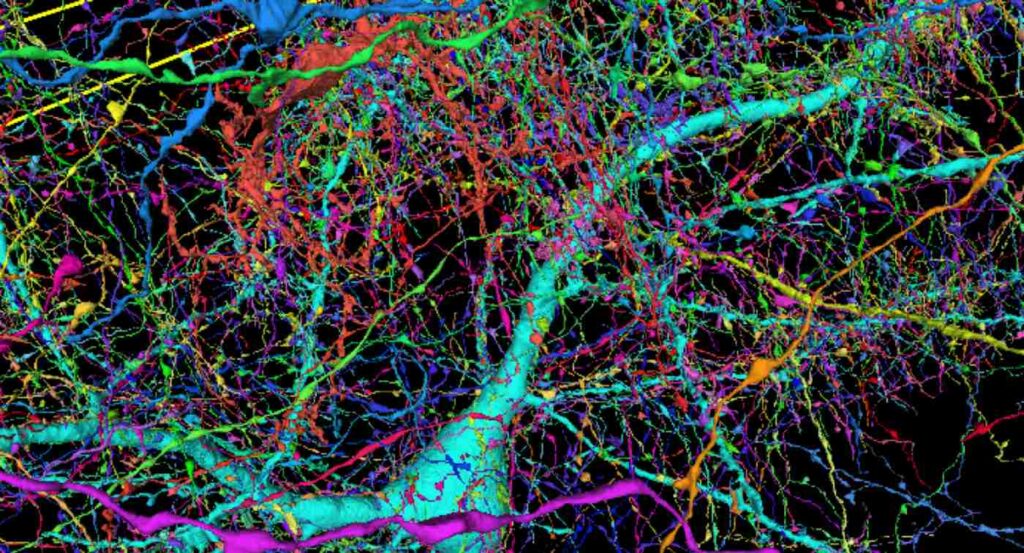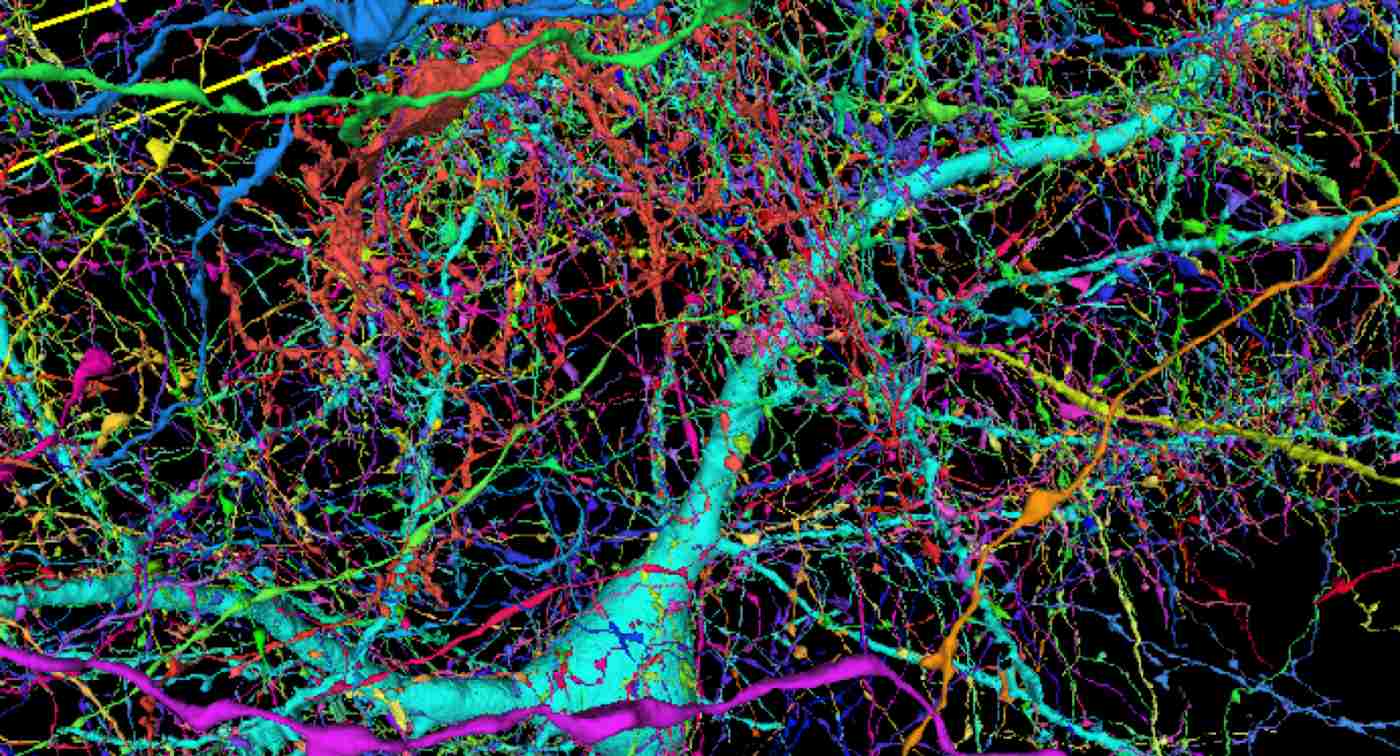
There are more possible connections between neurons in the brain than there are stars in the galaxy, making the ole’ noggin the most complex supercomputer we know of.
To map the connections in just one millimeter of cerebral cortex tissue required over a million gigabytes of data, and 225 million images.
Now assembled by researchers from the Lichtman Lab at Harvard and Google, the 3D image is the most detailed ever taken of our neurology. The hope is to replicate this method enough to create a puzzle of the human brain which is being called the “connectome.”
To say the connectome could take our entire lives to complete is no exaggeration. To complete the connectome of a C. elegans worm that possesses just 302 neurons required 12 terabytes of data. Google has also made a swing—along with the Howard Hughes Medical Institute, at a fruit fly connectome—which has around 100,000 neurons. It took a year and 100 terabytes to manage about half the fruit fly brain.
Here a 2D image of the C. elegans brain matter is extrapolated by machine learning and other science gubbins into a 3D map.
Rather more detailed
With between 100 and 86 billion neurons and 100 trillion synapses—electrical interchanges and signals between cells, the human brain is rather more detailed than its invertebrate neighbors’.
MORE: New Study Proves That People Can Train Themselves to Be More Focused By Manipulating a Brain Wave
Nevertheless, taking a one millimeter cubed section of cerebral cortex, the researchers coated it in resin, and cut it into about 5,300 individual slices each about 30 nanometers thick in order to reduce the detail low enough to image with an electron microscope. After all that, they still needed over 200 million images before they could reassemble it into a completed 3D map.
The H01 dataset, as it’s called, measures 1.4 petabytes, more than the Pentagon gathers in a month, and contains 50,000 cells and 130 million synapses, making it the most complete picture of a part of the brain ever made.
Interesting observations were made, for example that glial cells, a brain-specialized immune cell, outnumbered neurons two to one, and are available to study in a pre-review accompanied paper on BioRxiv.
In a video produced by Google, one can watch a zooming in-and-out process that highlights different aspects at different levels of the sample.
SHARE This Breakthrough With Friends on Social Media…





















They will find that just like fingerprints, no two brains are exactly alike. Our minds and bodies are more complex than we can even begin to imagine. As someone said, “Who are you to say there is no God?”